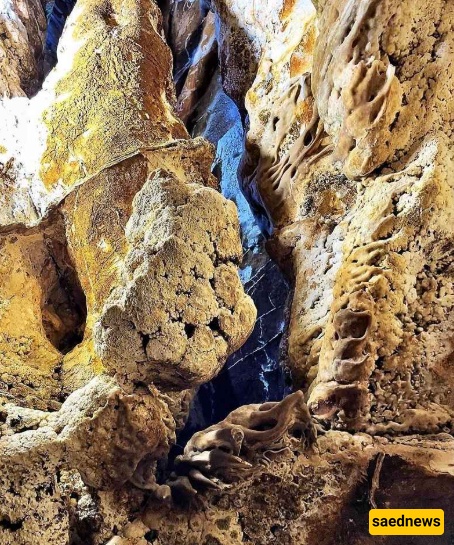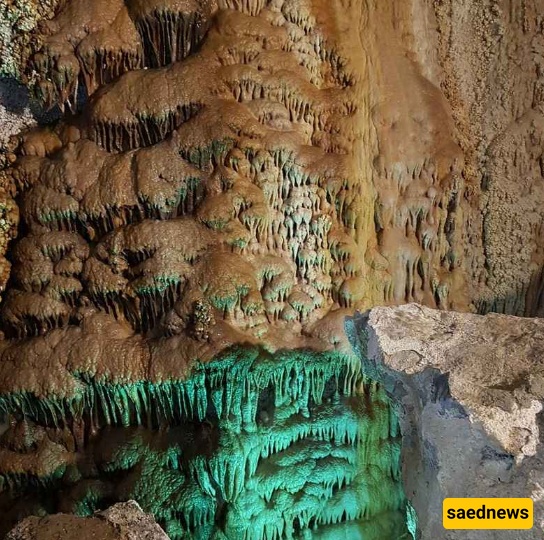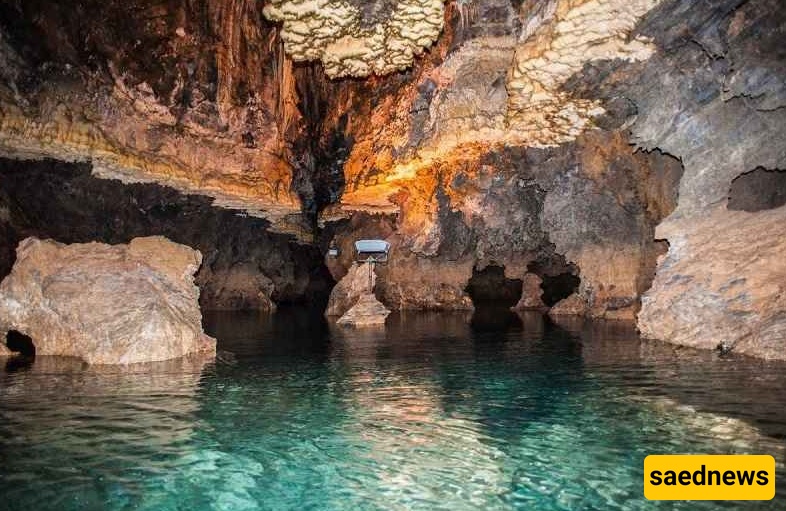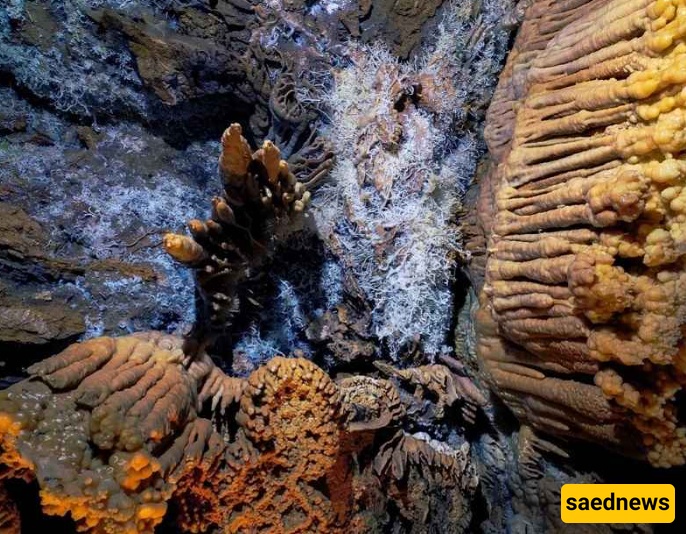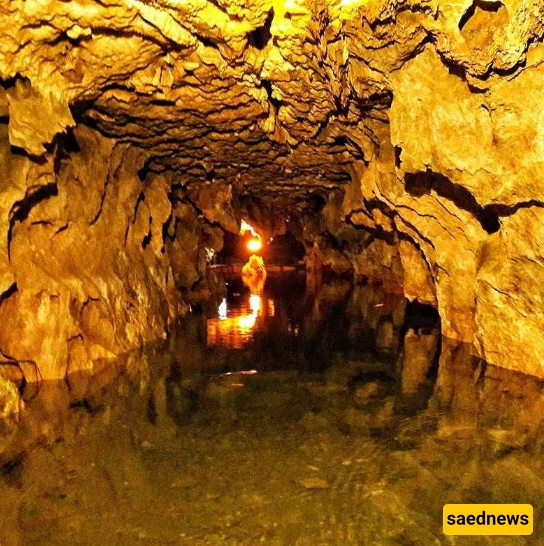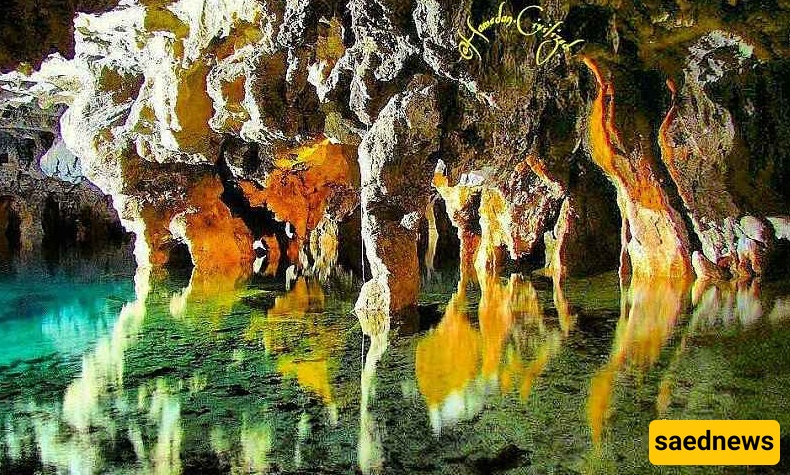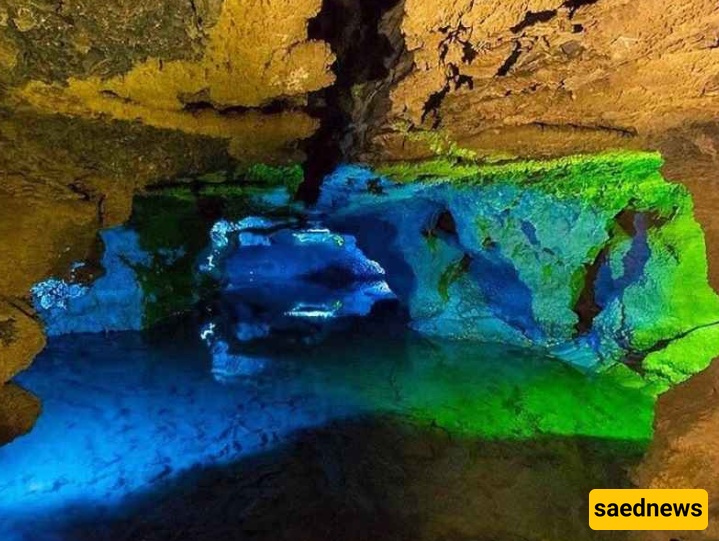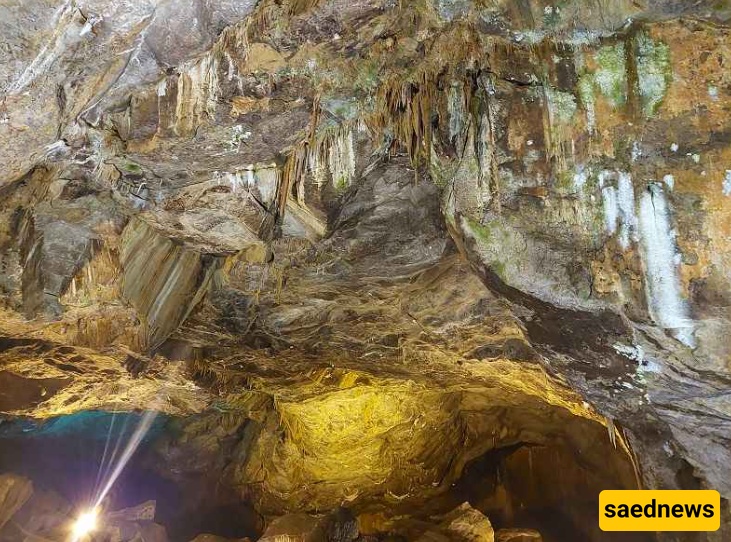SAEDNEWS: Ali Sadr Cave is one of the tourist attractions of Hamadan and the largest water cave in the world. This cave is registered on Iran's list of natural heritage sites.
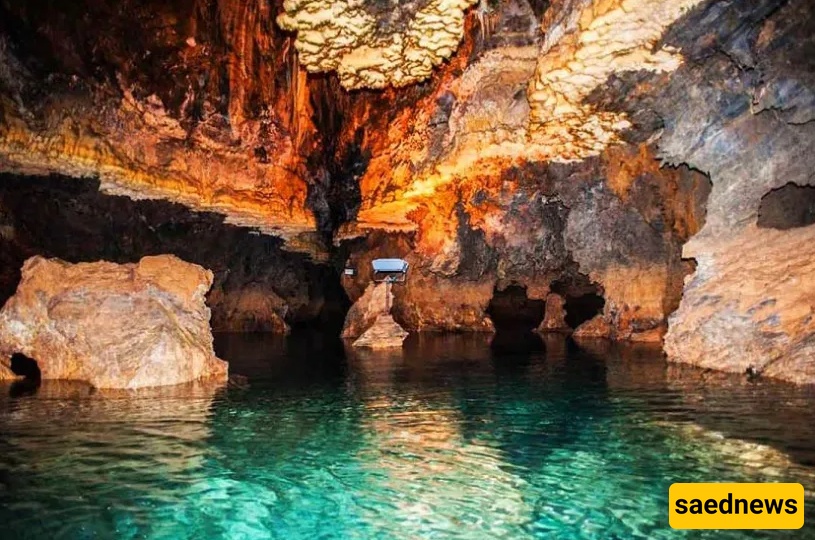
Ali Sadr Cave in Hamedan is one of the largest caves in Iran and one of the few water caves in the world where boating is possible, featuring the longest boating route. This cave, dating back millions of years, is located in the village of Ali Sadr in Hamedan and is one of the most amazing natural attractions in Iran and the world.
By visiting Ali Sadr Cave, you board pedal boats and travel along the waterway through numerous corridors and winding tunnels, encountering increasing wonders that astonish you as you go further. This cave is part of the Ali Sadr tourist recreational complex and welcomes visitors with facilities such as several restaurants, a traditional teahouse, a café, a shopping center, an observatory, a prayer room, wooden gazebos, restrooms, parking, a hotel, and accommodation suites.
Ali Sadr Cave is considered one of the most beautiful natural wonders of the world, located on the northern slope of the Zagros mountain range and deep in the heights of “Sariqieh.” The cave is near the village of Ali Sadr, which belongs to Kabudarahang County in Hamedan Province. The distance from Ali Sadr Cave to Tehran is 335 kilometers (about four hours).
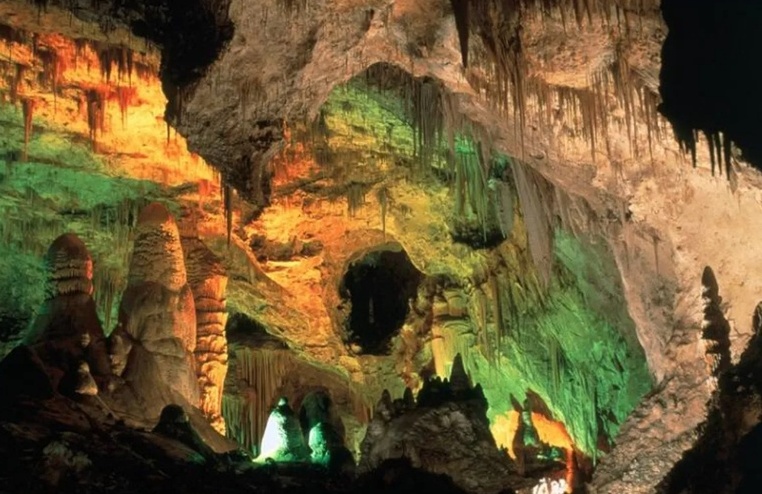
Ali Sadr Cave in Hamedan is Iran’s only lake cave and one of the few water caves in the world that allows boating, with the longest boating route. The cave is also recognized as one of the largest water caves globally, dating back to the second geological era, the Jurassic period (190 to 136 million years ago). On January 7, 2009 (17 Dey 1387 in the Iranian calendar), Ali Sadr Cave was registered as the 23rd natural heritage site on Iran’s natural heritage list.
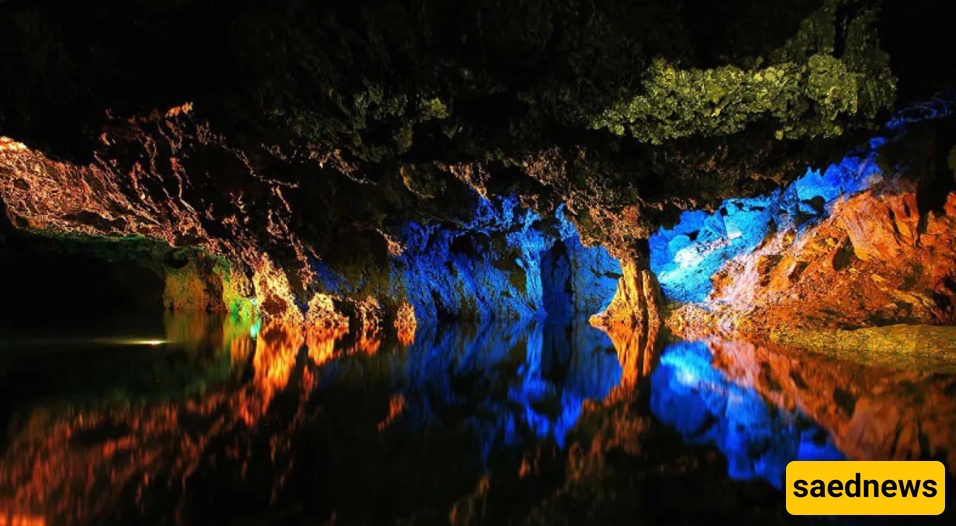
Due to its continuous waterways and a large boating lake spread throughout the cave, Ali Sadr Cave is one of the most stunning natural attractions in Iran and the world, with similar examples found only in a few caves in France and Australia.
Ali Sadr Cave was formed entirely naturally, with no human intervention. Regarding how the cave was created, it can be said that the combination of rainwater mixed with carbon dioxide in the air formed weak carbonic acid. This acid penetrated the limestone terrain and, through a chemical reaction, produced an unstable compound called calcium bicarbonate.
Since calcium bicarbonate is soluble in water, it created empty spaces within the thick limestone layers. These spaces expanded and connected over millions of years, resulting in this amazing masterpiece of nature—the Ali Sadr Cave—formed deep underground.
The discovered parts of Ali Sadr Cave in Hamedan consist of corridors, halls, and narrow, winding passages. Some of these corridors are dead ends, and others connect to each other. Tourists pass through these corridors by boat and observe the cave’s wonders.
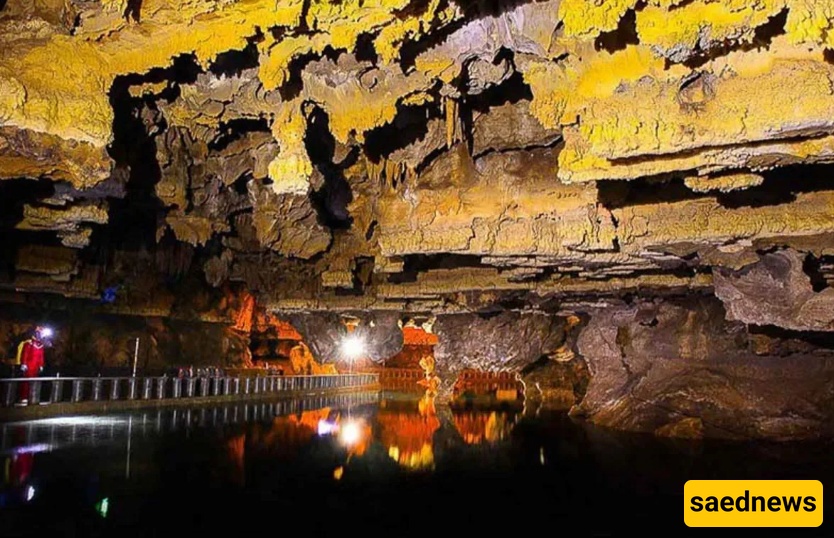
A large and water-filled lake is located in the central part of the cave, which can only be crossed by boat. The lake’s water is supplied by underground springs and continuous dripping from the cave walls and ceiling, all generally originating from rainfall.
When visiting Ali Sadr Cave, after passing through the waterway by boat, a walking path opens up where you can observe beautiful natural scenes. At the end of the walking path, you reach another waterway that takes you to the cave’s exit. The return path is narrower with a lower ceiling but does not obstruct boat passage.
The water depth in different parts of Ali Sadr Cave ranges from half a meter to 14 meters, and some underground cavities reach depths of up to 40 meters. The cave’s length is nearly 12 kilometers, but due to difficult terrain, only three kilometers are accessible.
The lake water in Ali Sadr Cave in Hamedan is clear, odorless, and has a normal taste. Physical and chemical tests on the cave water show that its chemical composition is similar in different parts of the cave. However, due to the high amount of limestone minerals in the water, it is not potable.
Excess water from the cave is discharged outside through various channels; thus, the water level remains fairly stable throughout the seasons and years, except during droughts. In dry periods, water levels fluctuate, leaving visible marks on the cave walls.
One of the attractive features of Ali Sadr Cave, which distinguishes it from other water caves in the world, is the large water channels inside the cave that allow tourists to boat with ordinary boats. By visiting this cave, you experience an exciting journey into the depths of an unknown world.
Visiting Ali Sadr Cave includes passing through both water routes and land paths. Upon entering the cave and traveling a distance, you reach the boat dock. After putting on life jackets, you board pedal boats and start moving through the numerous corridors and narrow hallways of the cave, arriving at the cave’s lake. With the explanations of the boat guide, you receive useful and fascinating information about the cave and observe the wonders of the cave and the depths of the clear water.
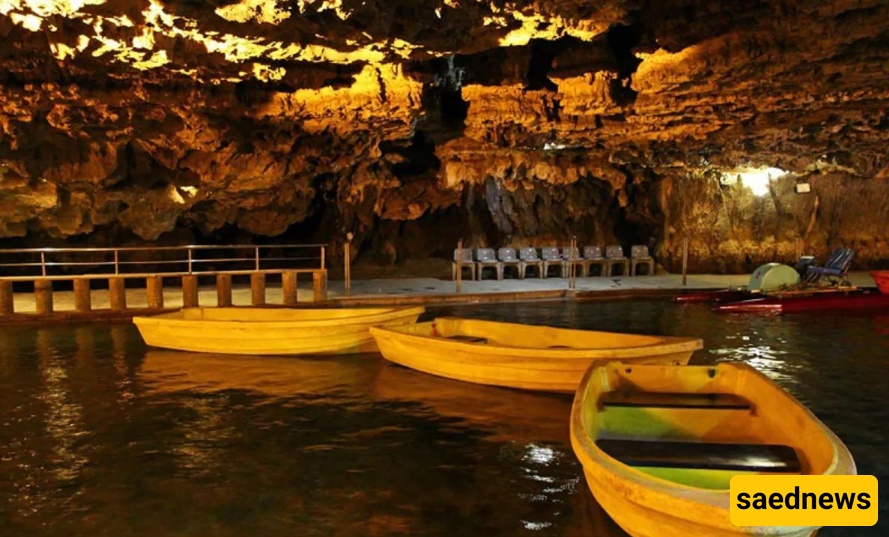
After about one kilometer of boating, you reach land. You must get off the boat and continue on foot. You then walk approximately two kilometers. Finally, you arrive at boats that have been arranged for your return. These boats take you back to the cave entrance through a different route than the one you came.
Along the boat route inside the cave, there are lighting arrangements that enhance the beauty of the cave and create an attractive atmosphere for tourists. Throughout the route, you will see stalactites (dripstones) and stones shaped into strange, imaginative forms or resembling animals, which ignite your imagination.
Despite many years having passed since the discovery of Ali Sadr Cave, there are still many parts of the cave where tourists cannot enter or boat.
You might ask: where exactly is the end of Ali Sadr Cave? Currently, there is no precise information available about the cave’s end, and no answer exists to this question. This unique cave is considered one of the wonders of the natural world.
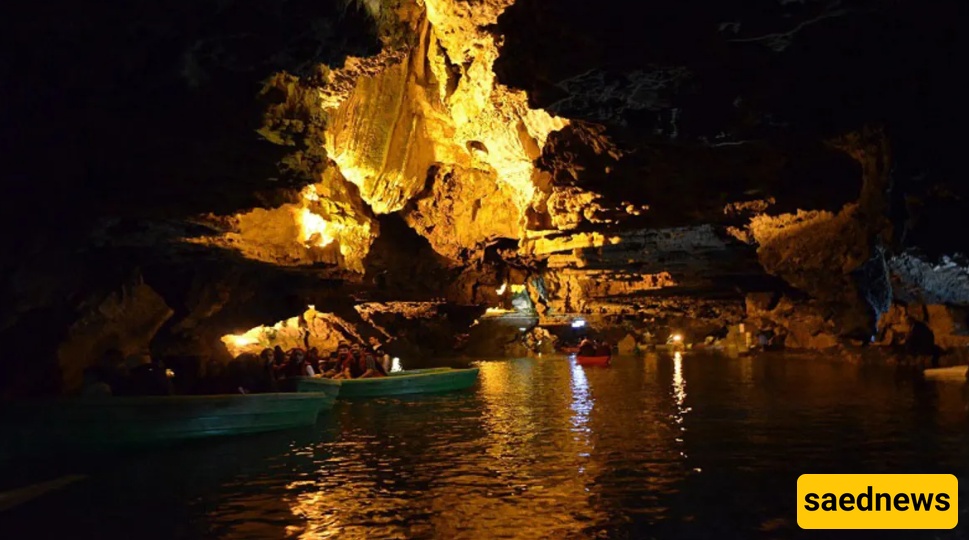
Hamedan is a cold city, and due to the severe cold in winter, it is better to choose warm and moderate seasons to travel to this city; Hamedan enjoys pleasant weather in spring and summer.
Ali Sadr Cave, as one of Hamedan’s tourist attractions, is a popular destination during the Nowruz holidays and summer. Of course, visiting Ali Sadr Cave in the cold winter is also enjoyable since the cave’s temperature remains almost constant year-round, between 12 and 14 degrees Celsius, and during the cold seasons, you will not feel cold inside the cave.
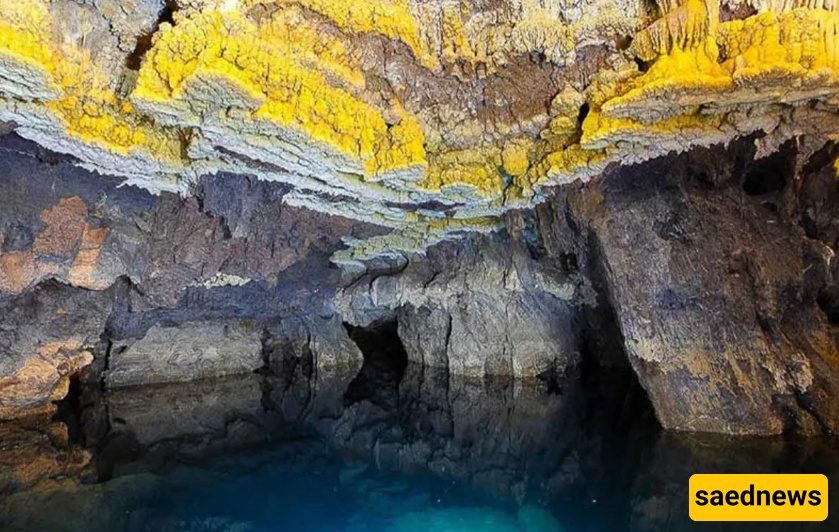
Ali Sadr Cave in Hamedan is one of the largest caves in Iran. According to geologists, the age of the rocks in this cave dates back to the Jurassic period, and evidence inside the cave shows that in the past, it served as a shelter for residents of Ali Sadr village and nearby villages during attacks by bandits and enemy forces in internal and external wars.
The villagers used to direct surplus water from the Sarab stream into Ali Sadr Cave as a reservoir and dam to store water during the hot season. This caused the water level in the eastern part of the cave to rise close to the cave entrance, making access to the cave impossible for years—until the Farsinaj earthquake in Kermanshah in December 1957 (Azar 1336 in the Iranian calendar) caused a crack in the cave floor, abruptly cutting off the Sarab stream water. Over six years, by around 1963 (1342 Iranian calendar), the water level returned to its natural height.
The use of Ali Sadr Cave for tourism was never seriously considered until October 27, 1963 (5 Mehr 1342), when a 14-person group from the Hamedan Mountaineering Board visited and explored the cave. Using basic equipment such as handheld lamps and rubber tubes, they managed to advance a short distance into the cave.
In 1967 (1346 Iranian calendar), after the news of the discovery of this amazing and endless cave was broadcast on national media, a flood of researchers, mountaineers, and nature enthusiasts rushed to this cave. The first explorers of Ali Sadr Cave were Mr. Yousef Najayi, Einollah Bakhtiari, Abbas Raoufi, and Mohammad Homayouni, whose memorial can be seen near the cave entrance.
In the 1960s, the entrance diameter of Ali Sadr Cave in Hamedan was about 50 centimeters, and only professional mountaineers could enter and exit the cave. Until 1974 (1353 Iranian calendar), when Mr. Abdullah Hajilo, then head of the Hamedan Mountaineering Board, personally with help from local people and the mountaineering board, widened the cave entrance to five meters wide and three meters high. Since 1975 (1354 Iranian calendar), the cave has been open to the public. Since then, many improvements have been made around and outside the cave to facilitate visitor access, including extending the water routes and adding land paths for visits.
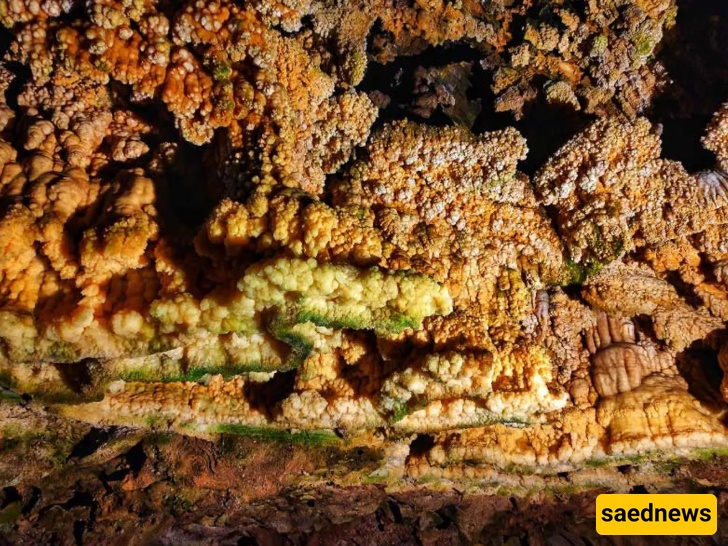
The villagers of Ali Sadr and nearby villages used the cave as a water reservoir and dam. The name of this village appears in existing documents as “Ali Sad.” However, in the identity cards of the villagers, the name “Ali Sard” is recorded.
In 1971 (1350 Iranian calendar), during the construction of a road for travel to the village, the contractor in charge of the project put the name “Ali Sadr” on the project’s guide sign, and since then, both the village and the cave have been known by this name. Although today the cave is known as Ali Sadr, the cave’s original name was Ali Sard because of the cold water inside it.
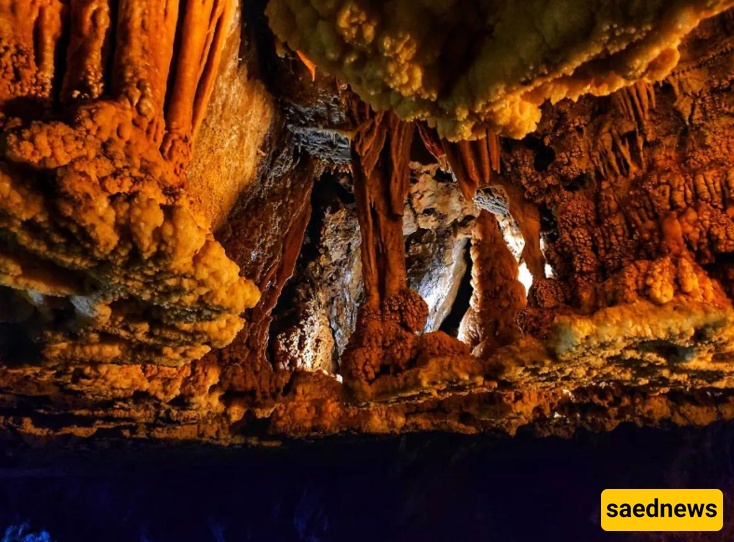
The features of Ali Sadr Cave include the following:
The altitude of Ali Sadr Cave above sea level is 2,180 meters.
So far, 12 kilometers of the corridors and pathways of the cave have been identified, but due to its difficult accessibility, only about three kilometers are open for tourist visits.
The water depth in Ali Sadr Cave in Hamedan fluctuates between half a meter and 14 meters.
The maximum height of the cave from the water surface is 40 meters.
The maximum height of the cave from the water depth is 54 meters.
Although the cave is located underground, there are no toxic gases inside and no shortness of breath is experienced within the cave.
The water of the cave’s lake is colorless and odorless.
The air inside Ali Sadr Cave is very pure, mild, and free from any dust or microbial contamination.
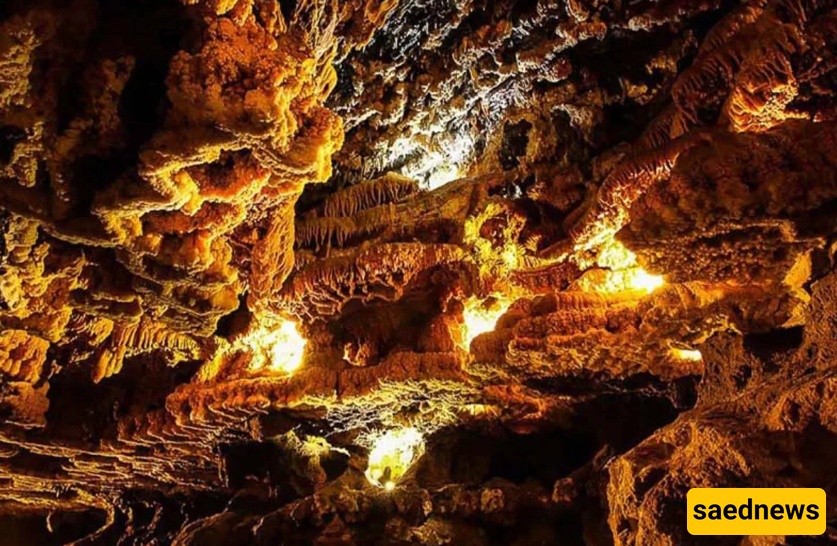
The wonders of Ali Sadr Cave include the following:
Ali Sadr Cave is a living, consolidated cave that is millions of years old and has never experienced any collapse.
Ali Sadr Cave is one of the largest water caves in the world, and due to its vastness, one can easily pass through its water channels by ordinary boats.
Due to the lack of natural light, Ali Sadr Cave contains no animal life.
Thanks to multiple cellular vents, despite thousands of visitors daily, the cave has fresh air and no toxic gases are found inside.
The temperature inside Ali Sadr Cave in Hamedan remains constant throughout the year, ranging between 12 to 14 degrees Celsius; therefore, it offers a pleasant temperature for tourists in all seasons. In the summer heat, visitors feel cool air entering the cave, and due to the cold climate of the region, the cave does not feel cold in winter.
The air inside Ali Sadr Cave is very light and completely still; if a candle is lit inside the cave, there is no movement in the flame.
The water of the cave’s lake is so clear and transparent that up to a depth of 10 meters can be seen clearly with normal light and the naked eye.
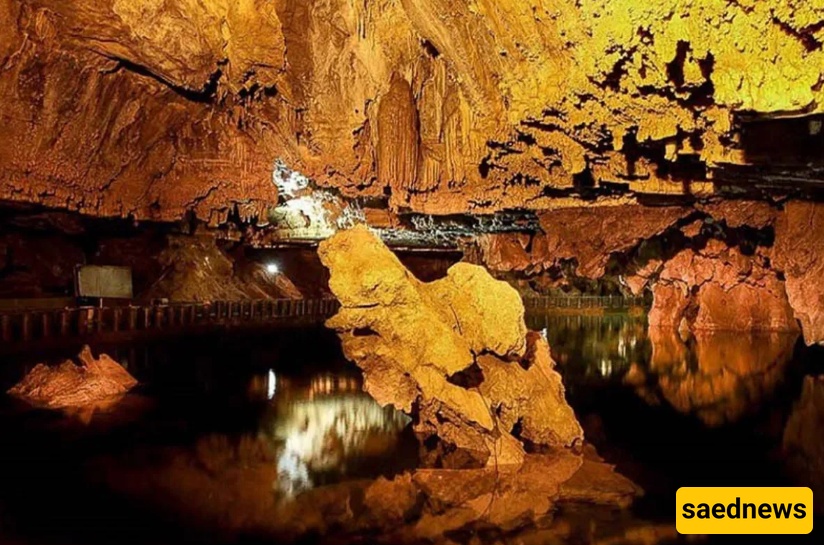
The ceiling of Ali Sadr Cave, which in some parts reaches about 10 meters above the water surface, is covered with pure calcium carbonate, and in some areas mixed with other elements that have been deposited by water flowing from outside into the cave. These deposits form various types of “stalactites.”
On the cave floor, in areas where there is no water, “stalagmites” are abundant in diverse and attractive shapes. The stalactites and stalagmites of Ali Sadr Cave are seen in stunning shapes such as cauliflower-like, needle-like, reed-like, snowy, umbrella-shaped, and more.
The beautiful colors of the stalactites and stalagmites are due to the presence of minerals like iron, magnesium, zinc, lead, copper, and others in this region of the earth’s crust. These minerals color the clear water in shades of yellow, red, purple, brown, green, and blue, combining with the stalactites and stalagmites to give them vivid colors.
Along the entire walking path inside Ali Sadr Cave, there are stone formations and sculptures in strange shapes or resembling animals; these natural stone sculptures have been formed by the erosion of limestone over millions of years and appear like artworks within the cave. Among the most famous shapes found in the cave are the Dragon’s Claw, the Field of Columns, the Eagle’s Claw, the Stone Waterfall, the Cave Lion, the Cave Gate, Persepolis Throne, and the word “Allah.”
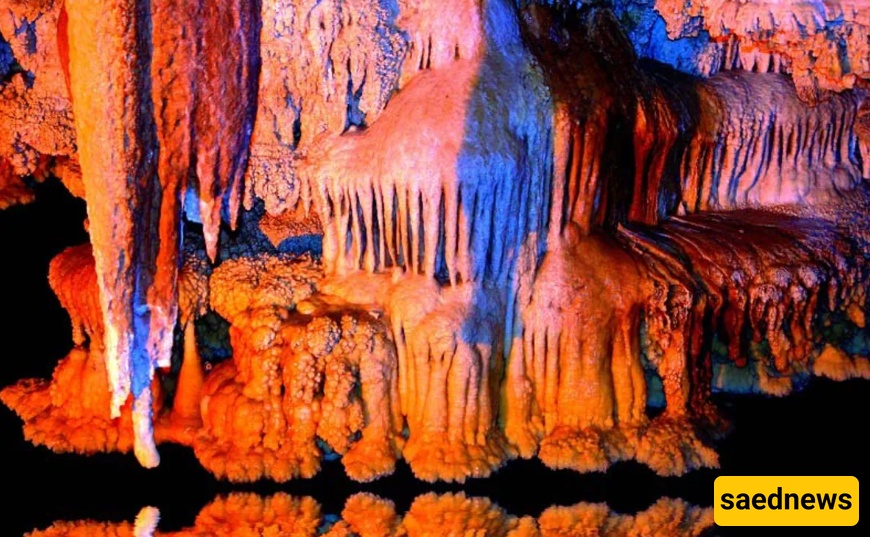
Due to the absence of natural light and living conditions, no animal or plant life exists inside Ali Sadr Cave in Hamedan.
According to news reports from sites like ISNA in the year 2013 (solar calendar), a diving team exploring the waters of Ali Sadr Cave encountered a crustacean species that appeared unknown. At that time, the team was unable to collect a sample of this creature. Later, a student group observed and sampled this creature inside the cave and named it “Niphargus Alisadri.”

In 2015, a diving team again collected samples of this rare crustacean. According to studies, apart from unicellular organisms and algae, which exist due to human traffic inside the cave, no other living creatures inhabit the cave. These studies were conducted in surface waters and depths of the cave. The crustacean is described as being two centimeters long, blind, and apparently not requiring light. This creature probably feeds on minerals and unicellular organisms within the cave.
